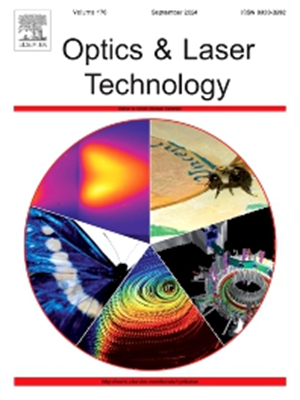一种用于消除汽车平视显示器虚像的高反射率双层液晶聚合物薄膜
IF 5
2区 物理与天体物理
Q1 OPTICS
引用次数: 0
摘要
汽车增强现实平视显示器(ar - hud)的挡风玻璃通常采用楔形薄膜,以消除前后表面双重反射造成的重影。然而,由于对环境光透过率要求较高,这种楔形膜对PGU光的反射率一般在20%以下,造成了严重的能源浪费。提出了一种由胆甾型LC层和LC波片层组成的双层液晶聚合物膜结构。胆甾体LC层有效地将PGU的圆偏振光反射到眼箱中,而波片修改从挡风玻璃后表面反射的光的偏振状态,防止其通过胆甾体LC层重新进入眼箱。对于绿光显示器,采用严格耦合波分析(RCWA)优化了LC层结构并进行了实验制备。结果表明,该结构对PGU光的反射率达到80%,对环境光的透射率超过70%,主副像强度对比超过100:1。这种双层LC聚合物薄膜满足汽车AR-HUD挡风玻璃的消影要求,同时与一般楔形薄膜结构相比,HUD能效提高了三倍以上。本文章由计算机程序翻译,如有差异,请以英文原文为准。
A high-reflectivity double-layer liquid crystal polymer film for eliminating automotive head-up display ghost image
Windshields in automotive augmented reality head-up displays (AR-HUDs) typically employ wedge-shaped films to eliminate ghosting caused by dual reflections from their front and rear surfaces. However, constrained by the requirement for high environmental light transmittance, the reflectivity of such wedge films for the light from picture generation unit (PGU) is generally below 20 %, resulting in significant energy waste. This paper proposes a double-layer liquid crystal (LC) polymer film structure composed of a cholesteric LC layer and a LC waveplate layer. The cholesteric LC layer efficiently reflects circularly polarized light from the PGU into the eyebox, while the waveplate modifies the polarization state of light reflected from the windshield’s rear surface, preventing it from re-entering the eyebox through the cholesteric LC layer. For green light displays, the LC layer structure was optimized using rigorous coupled-wave analysis (RCWA) and experimentally fabricated. Results demonstrate that the proposed structure achieves 80 % reflectivity for PGU light, over 70 % transmittance for environmental light, and a primary-to-secondary image intensity contrast exceeding 100:1. This double-layer LC polymer film meets the ghosting elimination requirements for automotive AR-HUD windshields while improving HUD energy efficiency by more than threefold compared to the general wedge-shaped film structure.
求助全文
通过发布文献求助,成功后即可免费获取论文全文。
去求助
来源期刊
CiteScore
8.50
自引率
10.00%
发文量
1060
审稿时长
3.4 months
期刊介绍:
Optics & Laser Technology aims to provide a vehicle for the publication of a broad range of high quality research and review papers in those fields of scientific and engineering research appertaining to the development and application of the technology of optics and lasers. Papers describing original work in these areas are submitted to rigorous refereeing prior to acceptance for publication.
The scope of Optics & Laser Technology encompasses, but is not restricted to, the following areas:
•development in all types of lasers
•developments in optoelectronic devices and photonics
•developments in new photonics and optical concepts
•developments in conventional optics, optical instruments and components
•techniques of optical metrology, including interferometry and optical fibre sensors
•LIDAR and other non-contact optical measurement techniques, including optical methods in heat and fluid flow
•applications of lasers to materials processing, optical NDT display (including holography) and optical communication
•research and development in the field of laser safety including studies of hazards resulting from the applications of lasers (laser safety, hazards of laser fume)
•developments in optical computing and optical information processing
•developments in new optical materials
•developments in new optical characterization methods and techniques
•developments in quantum optics
•developments in light assisted micro and nanofabrication methods and techniques
•developments in nanophotonics and biophotonics
•developments in imaging processing and systems

 求助内容:
求助内容: 应助结果提醒方式:
应助结果提醒方式:


